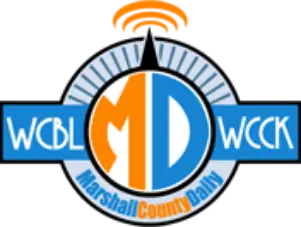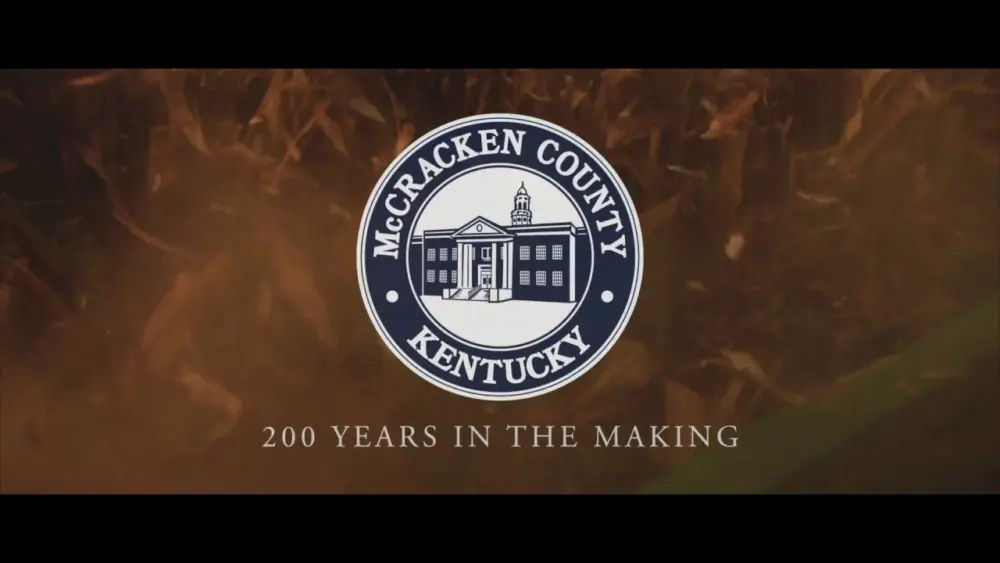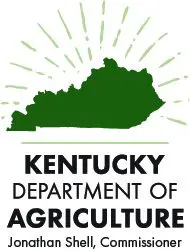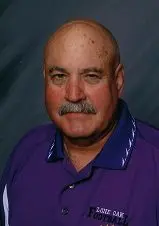The South Carolina of Kentucky Part IV:
The Mayfield Convention
By Justin Lamb
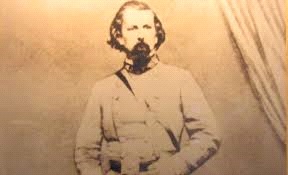 Above: Lloyd Tilghman
Above: Lloyd Tilghman
Southern Rights advocates in the Jackson Purchase were frustrated at Kentucky’s neutrality policy and wished to act on their own if the leaders in Frankfort refused to do so. Secession beliefs became so deep, the region quickly became known as the South Carolina of Kentucky by the spring of 1861. On May 10, 1861, a convention was organized in Mayfield by Paducah attorney and secession advocate A.D. Kingman for the purpose of forming a military alliance with Tennessee. Kingman feared an “invasion by an army of abolitionists at Cairo,” and according to the Louisville Journal, Kingman spoke to the convention where he declared Tennessee and Kentucky were “wholly unarmed” and Tennessee had proposed an alliance to defend the banks of the Ohio and Mississippi Rivers. No formal action was taken at this convention prompting a second convention to be held at the Mayfield Courthouse on May 29, 1861. Secessionist members from each county of the Purchase area and West Tennessee were represented. The goal of the convention was to secure the secession of the Jackson Purchase region from the state of Kentucky in an effort to join West Tennessee in being admitted to the Confederacy.
The state of Tennessee was moving closer to secession in May 1861 and Jackson Purchase residents were growing impatient as leaders in Frankfort clung to a neutral status. In a fire-breathing editorial, the Hickman Courier contended if the rest of Kentucky would not exit the Union then perhaps the fate of the Jackson Purchase was with an alliance with neighboring Tennessee, “The Kentucky Legislature has not, and is not, doing a thing towards the adjustment of our national difficulties…Certain, we are, that Southern Kentucky will per force link her destiny with that of chivalrous Tennessee…Only a state pride separates us now…where is the link that binds us?”
Unionists began to fear a possible movement to separate the Jackson Purchase from the Commonwealth of Kentucky prompting George Prentice of the Unionist newspaper Louisville Journal to sound the alarm bells toward a possible departure of the westernmost region and demanded action to prevent this act from happening, “The object of the Mayfield Convention, though not thoroughly explained, is the separation of the First District from Kentucky.” A letter to the editor featured the next day from an unidentified Paducah Unionist warned that “Some infernal scheme now being concocted by traitors in this end of old Kentucky.”
Coverage of the possible secession of the Jackson Purchase reached several Northern newspapers including the New York Daily Tribune. Fearing the loss of another section of the country, President Abraham Lincoln was informed of the secessionist convention by General George McClellan who wrote the president of “a very delicate question” about “a convention that is being held at Mayfield which may declare the ‘Jackson Purchase’ separate from Ky., its annexation to Tennessee, and that this will be followed by an advance of Tennessee. troops upon Columbus and Paducah.” McClellan sent Kentucky Unionist William O. Nelson to brief President Lincoln on the impending situation of the Mayfield Convention. If the sectional crisis was coming to war, Lincoln and the Federal Army could not afford to lose the cities of Paducah and Columbus due to their important geographic and strategic locations on the Mississippi and Ohio Rivers.
Very few details have survived on the Mayfield Convention. Two fires, one in 1864 and another in 1887, destroyed the Mayfield courthouse and the records of the Mayfield Convention. No local newspaper archives from 1861 have survived. A historical marker was erected on the courthouse lawn at Mayfield gives a very brief description of the meeting: In May, 1861, delegates of seven Kentucky and twenty Tennessee westernmost counties, the Jackson Purchase, met in Mayfield. Belief in Southern cause, dissatisfaction with Kentucky adherence to Union, and Tennessee delay in joining South, caused convention vote to secede and form a Confederate state. With Tennessee’s vote to secede, June 8, 1861, proposal abandoned.
The most detailed account comes from research conducted by historian Berry Craig in which he included in his book, Kentucky Confederates. According to Craig, secession was the main order of business at the three day convention, but other business was conducted including the unanimous endorsement of Congressman Henry C. Burnett on a pro-Confederate platform in the upcoming June 20 election. In his acceptance speech, Burnett remarked that if he was sent back to the halls of Congress, “it was his firm determination to arraign the traitor Lincoln before the bar of his country for treason, and if, in his endeavors to bring the usurper to justice, he should lose his life, he expected Kentuckians would avenge his death.” According to Craig, the convention delegates voted to turn the congressional election into a referendum on secession. “The delegates voted to add “for the South” and “for the North” to the ballot and citizens be requested to cast their votes on the subject.”
Several pro-secessionist speakers addressed the large crowd at the two-story Mayfield Courthouse. Oscar Turner of Ballard County argued not for full secession, but instead a military alliance with Tennessee. According to the New York Daily Tribune, Turner’s opinion was in the minority. Former State Senator Richard D. Gholson of Ballard County also addressed the convention and argued against “taking any portion of the state without the whole.” Golson argued that the Purchase leaving the state of Kentucky was against states’ rights and the very cause for which the South was fighting for. Gholson preferred secession of the entire state, not just a section, and argued that advocating sectional secession of the state would cause harm to the cause by alienating “friends in Upper Kentucky” and “would ultimately defeat the secession of the whole state.” Gholson held the belief that Lincoln would ultimately invade Kentucky in the coming months thus allowing the election of pro-secessionist candidates in the August election and “by Fall, Kentucky would be in the Southern Confederacy.” Gholson acknowledged he was raising a company of volunteers for the Confederate Army and encouraged others to cross the border in Tennessee and do the same.
By the second day of the convention, the crowd had increased in size that proceedings had to be moved to the courthouse lawn. Several speeches were made calling for volunteers to join the Rebel army in a sense of duty and Southern pride. Colonel Austin of Memphis, Tennessee address the crowd, “Kentucky was bound to belong to the Southern Confederacy—destiny had fixed it.” In eloquent fashion, Austin gave a speech full of Southern rhetoric by arguing that “neutrality was equal to secession” and Kentucky had a duty to join her Southern sister states. Austin told the gathering that he was “prepared to furnish every man in western Kentucky in twenty-four hours with a gun of any size and character that might be desired.”
Colonel Lloyd Tilghman of Paducah who was the Kentucky State Guard leader of the Purchase addressed the convention by advising that Purchase men wishing to fight stay home because “all who wanted to fight would soon have the opportunity to do so, and would be needed at home.” Tilghman gave a rebel-rousing speech bashing Lincoln, abolitionists, and the Louisville Journal. “The moment Lincoln’s forces put a foot upon Kentucky’s soil, I would attack them if I had but 500 men to do it with,” Tilghman proclaimed. Tilghman would later become a Confederate general taking part in the Vicksburg Campaign before being killed at the Battle of Champion Hill.
After several speeches, the convention turned over to the business elements where the task of adopting resolutions was undertaken. Circuit Judge James Campbell of Paducah steered the majority committee which offered a resolution proclaiming sympathy for the South, but they Jackson Purchase would adopt a “wait and see” policy and abide by Kentucky’s neutrality. However, the resolution warned any invasion from the North would be met with force. The minority report was given by Oscar Turner who denounced neutrality as “cowardly and unworthy of the character of Kentuckians.” Turner’s report called for an immediate military alliance with Tennessee “to fight any Yankee invasion with the whole power of Kentucky.”
The Purchase was clearly with the Southern cause, but the way to best assist the South was debated into the early hours of May 31 according to the Kentucky Yeoman. The majority opinion finally received the endorsement of Congressman Burnett who offered four resolutions to satisfy both the majority and minority parties. Burnett called for condemning Lincoln for “waging a bloody and cruel war” against the South and denounced the “Lincoln guns.” Burnett’s proposal praised Governor Magoffin for denying Lincoln’s calls for Kentucky soldiers and urged him drive away any Union invasion. As the convention came to an end, Burnett’s compromise proposals were well-received and approved overwhelmingly.
Interestingly, Kentucky oral history has dictated an alternate version of the Mayfield convention results. Fulton County Judge Herbert Carr gave a speech in 1907 where he declared the creation of a Confederate state was approved and an ordinance of secession was adopted. “In May 1861, a convention was held in the city of Mayfield, Ky., and attended by delegates from the Jackson Purchase, many settlers of which had always been dissatisfied with being a part of Kentucky and Tennessee, and in this convention, a resolution was introduced, voted upon and adopted that the people of the Purchase secede from their respective states and form a new state of their own.” Judge Carr’s account of the meeting could have been stretched for political purposes as his speech was given in the early twentieth century when Lost Cause rhetoric was the norm for Kentucky politicians, especially in the Jackson Purchase.
Nevertheless, the Jackson Purchase was the only region in the entire United States to have contemplated with separating from its parent state to join the Confederacy. Other regions in other states had broken away or threatened such to support the Union, but none had broken away to support the Confederacy. Unionists in western Virginia dissatisfied with the secession of Virginia, successfully broke away and formed their own state which became the state of West Virginia. Pro-unionists in Eastern Tennessee discussed a similar measure, but the strong Union presence in the area made the move unnecessary. The Purchase was solidly behind the Rebel cause and led the march toward a Confederate state.
News of the secessionist talks in the Purchase prompted the Federal Army to move troops to Cairo, Illinois, located just across the Ohio River from Paducah. Many residents of the Purchase feared an invasion and braced for a Yankee war. Residents of nearby Columbus in Hickman County, penned a letter to Confederate President Jefferson Davis requesting a Confederate troop presence in the region, “We acknowledge no Union but that of the Confederacy. We acknowledge no presidency but your Excellency.” Many home guard companies were created in each county to mount a defense of a possible attack. Graves County farmer William Pirtle wrote in his diary, “Quite a number of us in and about Feliciana….organized a company under the laws of the state, and proceeded to drilling which we kept up all summer.” With no Confederate troop presence in the region, Purchase men were preparing to defend their homes and land from any Yankee invasion.
In the summer of 1861, the Jackson Purchase began to exert its independent muscle in the June Congressional and state legislative elections. President Lincoln had called a special session of Congress for July 4 to deal with the sectional crisis and elections were to be held on June 20 to elect the representatives. The state elections for the state legislators was to be held August 5. Unionists all across Kentucky conducted strong campaigns to elect union supporters to the Congress and General Assembly. The results of the election were a clean sweep for Union candidates as they took control of 9 of the 10 Kentucky Congressional seats and carried 55,000 votes over their Southern Rights opponents.
The only seat to go to a Southern Rights candidate was the First Congressional District which included the Jackson Purchase region. Congressman Henry C. Burnett was re-elected narrowly in the First District which was only made possible from the large vote totals he received out of the Purchase. Burnett defeated Unionist candidate Lawrence Trimble of Paducah by a slim margin 2,763 votes and only carried his home county of Trigg by a mere 20 votes. Burnett’s largest vote totals came out of the Purchase where he received 5,626 votes in the region to Trimble’s 1,785. The strong secessionist sympathies in the Purchase showed through in the votes cast for Burnett. However, many did not see the Union victories in the election as an endorsement of the Union as much as it was an endorsement of Kentucky’s neutrality policy.
With the August 5 elections approaching, Unionist in Kentucky wished to win a majority in the General Assembly and used the election as a pro-Union referendum. The Southern Rights Party denounced neutrality and declared that a majority of Kentuckians were in favor of secession and ready to join their brethren in a Southern Confederacy. The results, however, told a different story as the Unionist Party took control of the General Assembly by a comfortable margin. The Unionists won a 76 to 24 majority in the Kentucky House of Representatives and won 27 out of the 38 seats in the Kentucky Senate.
In true Jackson Purchase fashion, the sentiments were much different from the remainder of the state and Purchase voters cast their votes much differently. The Southern Rights Party swept all seven races with many being uncontested. Only the House seats in Marshall County fielded a Union candidate, but Southern Rights candidate Jesse Gilbert of Marshall County walloped his Unionist opponent John W. Minter by a comfortable margin. Despite these results, the fact remained that Kentucky government was in the firm control of Unionist leaders and all hope for a Kentucky secession became very dim. Many Purchase men and boys felt abandoned and alienated by their state government and looked South to join the Confederate Army and don Rebel gray. One such man, Nathaniel Holley of the Fairdealing community, answered the call of duty and made the trek to Camp Boone in Clarksville, Tennessee where he would join the cause for Southern Independence.
